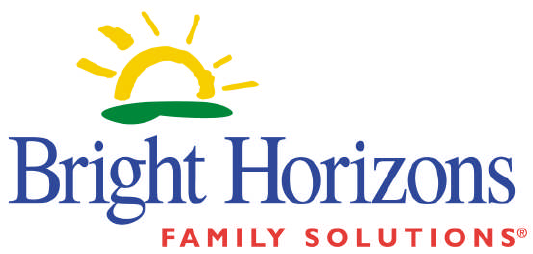
Bright Horizons
Food From Home
Nutrition_Food From Home_US_Nut Safe page 1 of 3
Updated 9/2012
Packing a Safe Lunch for Your Child
Bright Horizons believes meal times should be a happy and enjoyable time for children. We offer
the following suggestions in the hope of developing healthy eating habits for the children in our
care. Lunch can be fun, nutritional, and easy for you to prepare.
Please note we are not able to heat or prepare meals for children as this not only keeps the
children waiting for their lunch but also takes the staff away from their time with the children.
Additionally, microwaves often heat food unevenly. Due to limited spaced, refrigerators are not
available to keep your child’s lunch cold. We suggest that you use insulated lunch bags and ice
packs to keep food cool and thermoses to keep food warm.
However, there is a wide variety of healthy, enjoyable lunches that can be made for your child.
To assist you in preparing your child’s lunch, we have prepared the following tips to help ensure
that your child has a safe and healthy lunch.
Additionally, we strongly recommend avoiding foods that are high in fat or sugar in your child’s
lunch and using the USDA’s MyPlate recommendations to assure your child’s meal is well-
balanced. Providing a healthy lunch will assure your child has the energy and stamina to get the
most out of their day and fully participate in all of the fun learning experiences.
Always wash your hands in warm, soapy water before handling any food. If your child is
helping you, make sure that he/she has done the same.
Use an insulated lunch box or bag.
Refrigerate over night any perishable food items such as sandwiches prepared for the
next day. Add non-perishable food items the following morning.
Use a gel-pack, frozen drink (such as a bottle of water), a commercial ice pack or fill a
plastic refrigerator container with water and freeze for a homemade freeze pack to keep
food cold. Place foods that must be kept cold, closest to the ice pack. If sending dairy
products, extra ice packs may be required to keep food at the proper temperature.
Use a thermos to keep drinks cold until lunchtime. Also use a thermos to keep soups or
other hot liquids hot. Fill a thermos with hot water and let it stand for approximately 10
minutes before putting the hot food in. Do not pack soups with a cream or milk base.
Plastic food containers or recyclable butter tubs work well for packing fruits and
vegetables, cheese, or pieces of meat or chicken and homemade leftovers from the night
before.
Cut all food into bite-sized, easy-to-swallow pieces.
Children often like finger foods as an alternative to the traditional lunch box meal
Avoid using mayonnaise or eggs on sandwiches, especially if the sandwich or item isn't
refrigerated or properly cooled.
Wrap sandwiches in separate plastic bags or aluminum foil.
All lunch boxes/ bags should be labeled with the child’s full name.
Wash out reusable lunchboxes every night, including the ice packs. Use a baking soda
and water solution once a week to eliminate odors.
Use only new, clean brown bags. Don't reuse bags that have carried groceries. Never
use a bag that is wet or stained.

Nutrition_Food From Home_US_Nut Safe page 2 of 3
Updated 9/2012
Food Suggestions
Commercially prepared and ready-to-eat meats, such as ham and turkey are good lunchbox
choices because they last well. Leftovers from dinner the night before are always a good choice.
Many foods like baby-cut carrots, cheese and crackers, string cheese and other nutritious foods
now come packaged in child-sized portions. These are also good lunch options.
Fresh fruits and vegetables are not only nutritious; they also travel well, making them perfect for
lunch. Remember to wash fruits and vegetables before packing. The center may serve milk at
lunch and juice, milk or water at snack time depending on the snack and space availability.
Cold Sandwiches
Ham and Cheese
Turkey or Chicken
Tuna
Egg
Chicken Salad
Turkey Salad
Canned Fruit (in light
syrup)
Applesauce
Fruit Cocktail
Peaches
Pears
Pineapple
Mandarin Oranges
Fresh/Dried Fruit
Cantaloupe
Strawberries
Oranges
Apples
Bananas
Peaches
Honeydew
Plums
Pineapple
Pears
Fruit Salad
Blueberries
Raspberries
Raisins
Note: Grapes should
not be given to children
under four years old,
unless they are seedless
and cut in bite size
pieces lengthwise.
Vegetables
Carrot Sticks
Celery Sticks
Cucumber Sticks
Other Raw Veggies
Note: Do not give
children under four
years old celery or
carrot sticks.
Miscellaneous
Salad
Yogurt
Cottage Cheese
Hard Boiled Egg
Chicken Drumstick
Wheat Germ
Salsa
Hummus
Breads
Whole Wheat
Rye
Pita
Raisin
Banana
Oatmeal
Zucchini
Carrot
Additions
Cheese Sticks
Bread Sticks
Goldfish Crackers
Foods To Avoid
Sweets (Candy, Donuts,
Cakes, and Sugary
Cereal)
Soda
Nuts
Note: Honey should not be given to children under one year of age due to bacterial spores;
however, it is harmless for older children.
The American Academy of Pediatrics recommends that foods that are round, hard, small, thick,
sticky, smooth, or slippery, should not be given to children less than 4 years of age due to their
potential choking hazard. Examples of such foods are:

Nutrition_Food From Home_US_Nut Safe page 3 of 3
Updated 9/2012
Banana rounds
Celery
Chips
Chunks of meat larger than can be
swallowed whole
Grape/Cherry tomatoes
Green beans (whole)
Gum
Hard candy
Hard pretzels
Hotdogs (whole or sliced into
rounds)
Lollipops
Marshmallows
Nuts
Peanuts
Popcorn
Raw carrot rounds
Raw peas
Seeds
Spoonfuls of peanut butter
Whole grapes
If feeding hotdogs or grapes, they should be cut into bite-sized lengthwise pieces. Bananas
should be cut lengthwise into small pieces and raw carrots chopped or cut into thin strips will be
safe for your child. Carefully remove bones from any fish or meat and cut into small pieces.
Peanut butter (if allowed in the center) spread thinly on crackers is appropriate to send in your
child’s lunch.
Our center is a peanut and nut safe facility. Please carefully review labels of any foods you
send in with your child to the center to ensure they are “nut safe” and have no warning labels of
potential peanut or tree nut traces or manufactured on equipment that processes peanuts or tree
nuts to help eliminate any potential risk to children with severe nut allergies. Any food that is
brought in for
sharing
among the children must be either whole fruits or commercially prepared
packaged foods in pre-sealed containers. Only sealed products with ingredient labels verifying
there are no peanuts, no peanut products and no potential traces of nuts from the equipment
used for processing will be served to the children.
Food Temperatures
When packing your child’s lunch, you want to make certain that you pack the foods safely,
keeping foods at the correct temperature. Below is a list of foods and what temperature they
should be kept at to ensure the lunch you pack will be safe for your child. Please keep in mind
that these foods should be free of peanuts, other nuts and nut products.
Foods to be kept Cold
Room Temperature Foods
Hot or Cold
Foods
Meats, Fish, Poultry
,
Processed Meats
Breads, Crackers, Cereal
, Cookies,
Fruit Pies
Soups
Eggs
Jelly
Chili
Milk, Soft Cheese, Yogurt
,
Custards and Puddings
Whole Uncut Fruit, Dried F
ruit,
Unopened Canned Fruit
Casseroles
(lasagna)
Peeled and Cut Vegetables
Unopened Juice Boxes
Refried or Baked
Beans
Opened Fruit Juice
Hard Cheese
Pasta Salad, Chicken and Tuna
Salad, Salad
Unopened cans of Tuna, Meats,
Poultry
Cooked Pasta, Ric
e and other
Cooked Grains Raw Vegetables
Ketchup, Mustard, Margarine
